Steve Kerr: The Warriors' Ringmaster

This story appears in the June 15, 2015 issue of SPORTS ILLUSTRATED. To subscribe, click here.
Four hours before the NBA Finals and Steve Kerr is relaxing on a couch in his Berkeley Hills contemporary—three stories of steel and glass with views that stretch to the Golden Gate Bridge—reading the The New Yorker. It is the magazine his father used to read in the bleachers at Dodger Stadium, as Kerr chased batting practice home runs, a glossy reminder that sports is only part of culture. Literature and politics, music and food, comedy and travel, a man of the world appreciates them all, even if he specializes in just one. Kerr’s pursuit became basketball, and as interest in the game grew, so did exposure and revenue. But he never confused profitability for value. “There’s a machine that’s been built in this country around sports, and the machine is why we make so much damn money,” Kerr says. “We make a living in basketball. This is unbelievable. This is a joke. How did this happen? It’s good to think about that. It’s important for our players to think about it. You have to separate the seriousness of your craft, working to achieve something special, while recognizing the absurdity of it all.”
He is in a profession that does not normally lend itself to perspective, or balance. The sketch of the modern coach borders on caricature: watching Synergy cutups until his eyes bleed, writing notes until his fingers ache, falling asleep on the office floor and wearing the same tracksuit the next day. “Oh, yeah, with a binder that’s threefeet thick because of all the plays,” says Margot, Steve’s wife. “He’s not really like that.” Kerr hikes Sibley Volcanic Regional Preserve in Oakland. He surfs Pipes Beach in San Diego. He grills carne asada for his daughter, Maddy, and her volleyball teammates at Cal. He is kind of a foodie but hardly a snob. For a week every summer he flies to a buddy’s ranch in Baja California and stays in cheap motels near Scorpion Bay. Or he throws up a tent on the sand. “What’s your ZFL level?” you can ask him, and he’ll reply with a smile, “Pretty high.” ZFL is one of his pet acronyms: Zest For Life. In press conferences the 49-year-old wears a hoodie and jeans, with his omnipresent Vans. He’d like to coach a game in Vans.
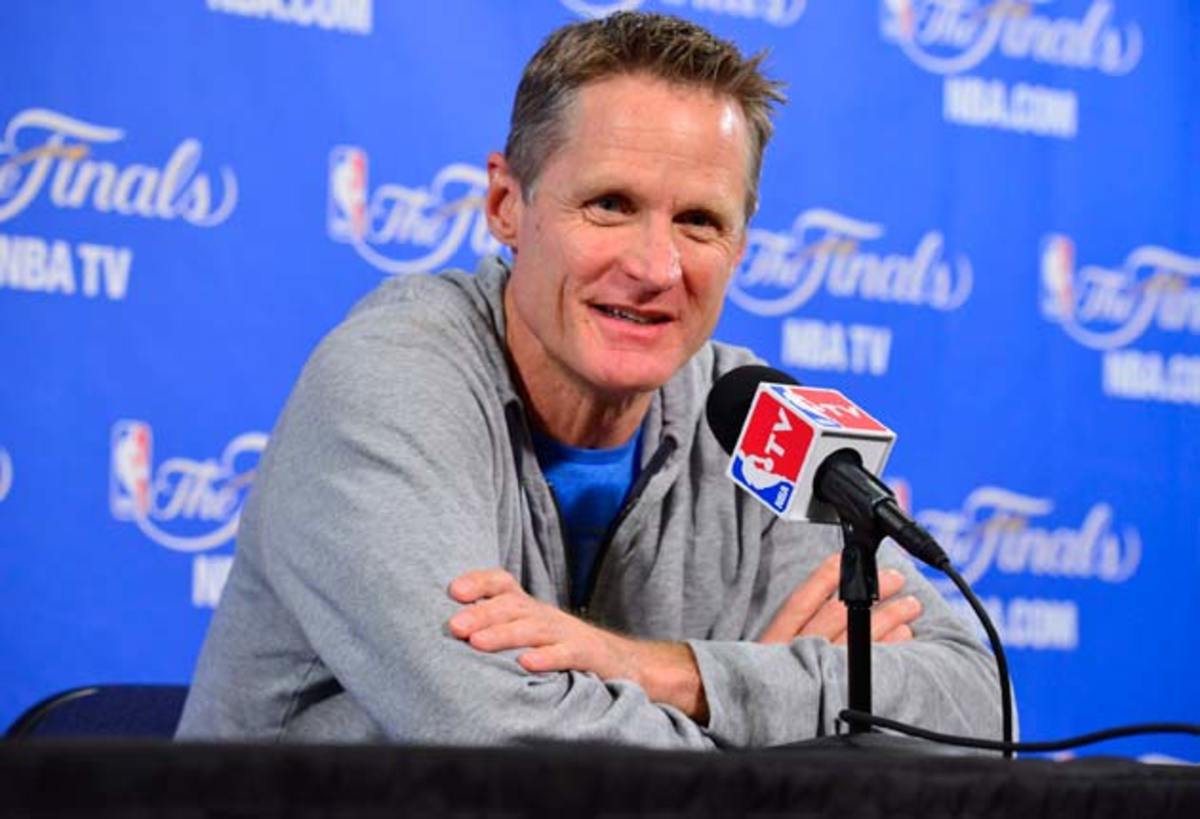
Kerr drives from shootaround in downtown Oakland to CorePower Yoga in Berkeley to Summer Kitchen Bake Shop on College Avenue for his preferred Dailey Method Salad. After games, even losses, he doesn’t dive immediately into video on the plane. He cracks open a book, or plays Scrabble on his computer, while slow-sipping a Modelo Especial. Only then does he queue up the video. Don’t get it wrong. None of this means he cares any less than his Belichickian brethren. He once broke a racket over his head during a tennis match. He practiced scribbling last summer so he could jot sets faster at timeouts. He drew eight technical fouls this season despite losing just 15 games. He’ll be in the midst of conversations with friends and ask what they’re talking about, because his mind has drifted to some X-and-O netherworld. Kerr needs his books, his Counting Crows songs, his driving-range swings at Tilden Park Golf Course to shield himself from the same competitive grease fire that consumes them all. This spring he has read Anthony Doerr’s All the Light We Cannot See and Donna Tartt’s The Goldfinch. Margot wants to give him a novel called Preparation for the Next Life, by Atticus Lish, about a romance between an undocumented Chinese immigrant and an Iraq war veteran. “I’m afraid it’s too gnarly for right now,” she says. “When the Finals are over.”
The Warriors hired Kerr in May 2014 after 15 years as an NBA guard, eight as a broadcaster and three as a general manager. In one of his first memorable acts as coach, he halted a mundane staff meeting at the team’s Oakland headquarters and ordered his lieutenants into assistant Luke Walton’s SUV. They drove 30 miles to Muir Beach, stripped down to their boxers and jumped into the bracing Pacific. “Do s‑‑‑ or go have fun,” player development coach Bruce Fraser cracked that day, a throwaway line that has become an organizational mantra. When Fraser notices Kerr tumbling down a rabbit hole of pick-and-roll coverages, he pulls him high into the Oakland Hills, and they find a trail. “You have to get out in the trees,” Fraser says.
Oracle Arena brings the noise for an NBA Finals worth screaming about
Fraser, nicknamed Q because he asks so many questions, met Kerr when they were sophomores at Arizona. Fraser set him up with Margot. They went on a double date, two basketball players and two Kappas, to Lunt Avenue Marble Club in Tucson. Fraser and Kerr remain best friends, and last summer they met every morning for berry scones at Fournee Bakery, where they sat on wooden benches across from the Berkeley Tennis Club courts. “I’d love to run the triangle,” Kerr, a Phil Jackson disciple, told Fraser, “but I don’t want to be too drastic.” He settled on a motion offense that emphasizes body and ball movement, along with a frenetic defense that switches almost every pick-and-roll, set under a boisterous big top. Down came the posters in the training facility dedicated to former Golden State All-Stars and up went pictures of current players yelling, hugging, high-fiving. Hip‑hop and classic rock provided the soundtrack at practice, and some sessions were canceled entirely, in favor of bowling tournaments and football games. Video sessions were interrupted with embarrassing old clips of coaches: Walton blowing a layup, Jarron Collins lumbering through a fast break, Kerr and Fraser performing a rap. “It’s a complete circus,” says forward Draymond Green.
Kerr is reluctant to tell the team about his own playing days, lest he ever seem pretentious, but when the Warriors trailed the Grizzlies 2–1 in the Western Conference semifinals, Fraser insisted. “They need a Bulls story,” he said, and Kerr shared a few tales about mid-1990s squads. Golden State promptly dispatched Memphis and Houston before splitting the first two games of the Finals against Cleveland. With Cavaliers point guard Kyrie Irving out due to a fractured kneecap sustained in Game 1, the Warriors’ championship odds remained high at week’s end, though their ZFL level needed another lift.
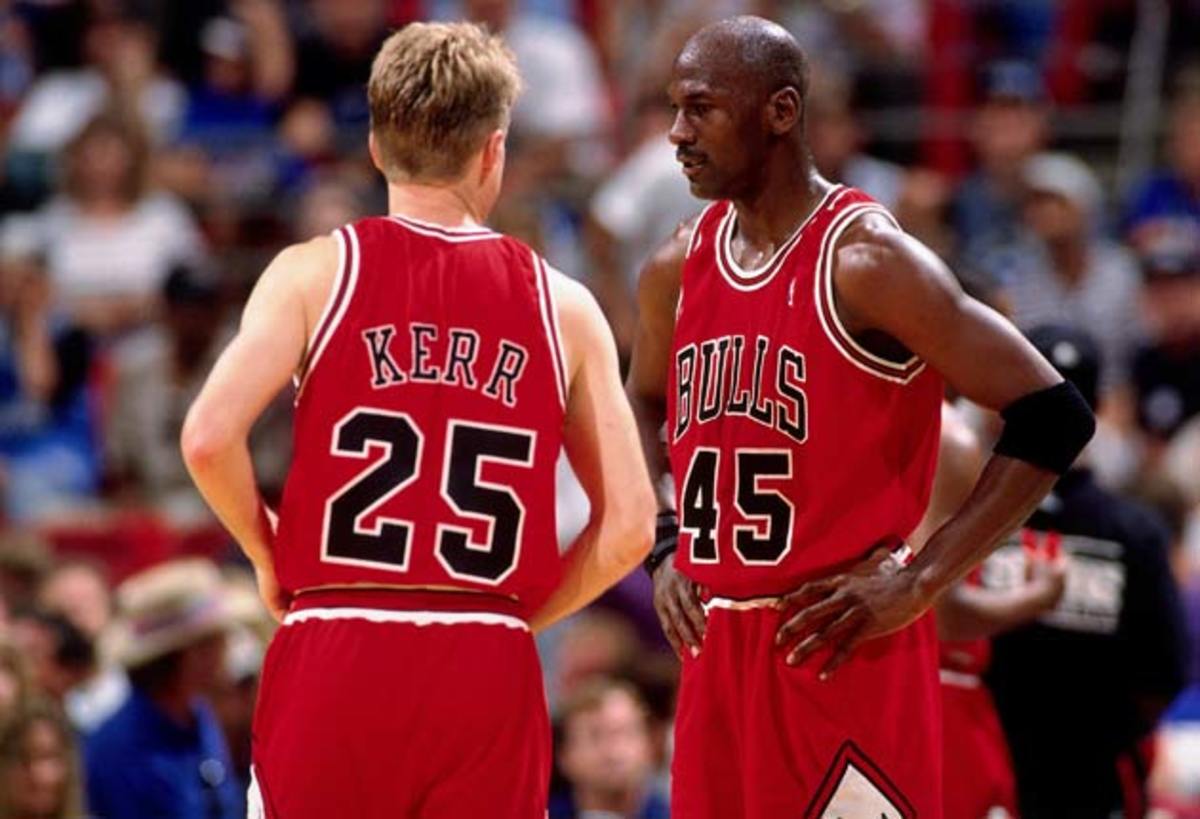
Kerr won five titles as a player and is favored to capture his first as a coach, less than nine months after his inaugural training camp address. “You’re great,” he told the Warriors back then, in their makeshift film room off the practice court. “We’re trying to make you better.” He didn’t utter a disparaging word about his predecessor, Mark Jackson. The players knew Kerr—he flew to see each of them when he landed the job—but not well, not yet. Who was he, they wondered, beyond the blond spikes and HD smiles? “Come on,” small forward Andre Iguodala pleaded to Fraser. “Give me some dirt.”
• MORE NBA: Fine tuning: Curry discusses relationship with Fraser, Kerr
Kerr was born in Lebanon, went to kindergarten in France and junior high school in Egypt. But home was Pacific Palisades, the beach enclave on the western edge of Los Angeles. His father, Malcolm, was a political science professor at UCLA and one of the leading authorities on the Middle East. His mother, Ann, still coordinates the university’s Fulbright scholarship program. His siblings, John, Susan and Andrew, all hold advanced degrees. Kerr was a stellar student at Palisades Charter High but less of an academic than a humorist. He narrated American history in a Howard Cosell accent—“Geronimo, the littleknown speedster!”—and called L.A. sports radio stations with sarcastic twists on major stories. When the CFL’s Montreal Alouettes made a splash in 1981, signing NFL stars Vince Ferragamo and Billy (White Shoes) Johnson and first-rounder David Overstreet in a bid for the Grey Cup, Kerr dialed KABC to talk about Billy (Green Shoes) Johnson, David Overhouse and the Purple Cup. His buddies, listening in their homes, howled as the host corrected him.
Kerr was co–sports editor of the Tideline, Pali’s student newspaper, with Michael Silver, a former SI senior writer who is now an analyst for NFL Network and NFL.com. They penned a rollicking weekly column called the Riptide, which skewered a football player who went 213 days in a row wearing a Polo emblem, “unofficially eclipsing Ralph Lauren’s world record”; a field goal kicker who “stormed off the field and attempted to drop kick his helmet in disgust. You guessed it—he missed”; and a basketball star who could lead the city in scoring if he “puts as much time into basketball as he does into his car.” They named names, and invented nicknames, like Strawberry Fox and Crunchberry Beast, Old Man and So-Rad. They called out the boys’ golf team for “floating off into oblivion in the eternal driving range of life,” the girls swimmers for “doing their best Go-Go’s impersonations” and the girls’ volleyball team for trying to “win the national championship and the hearts of the boys’ volleyball team, not necessarily in that order.”
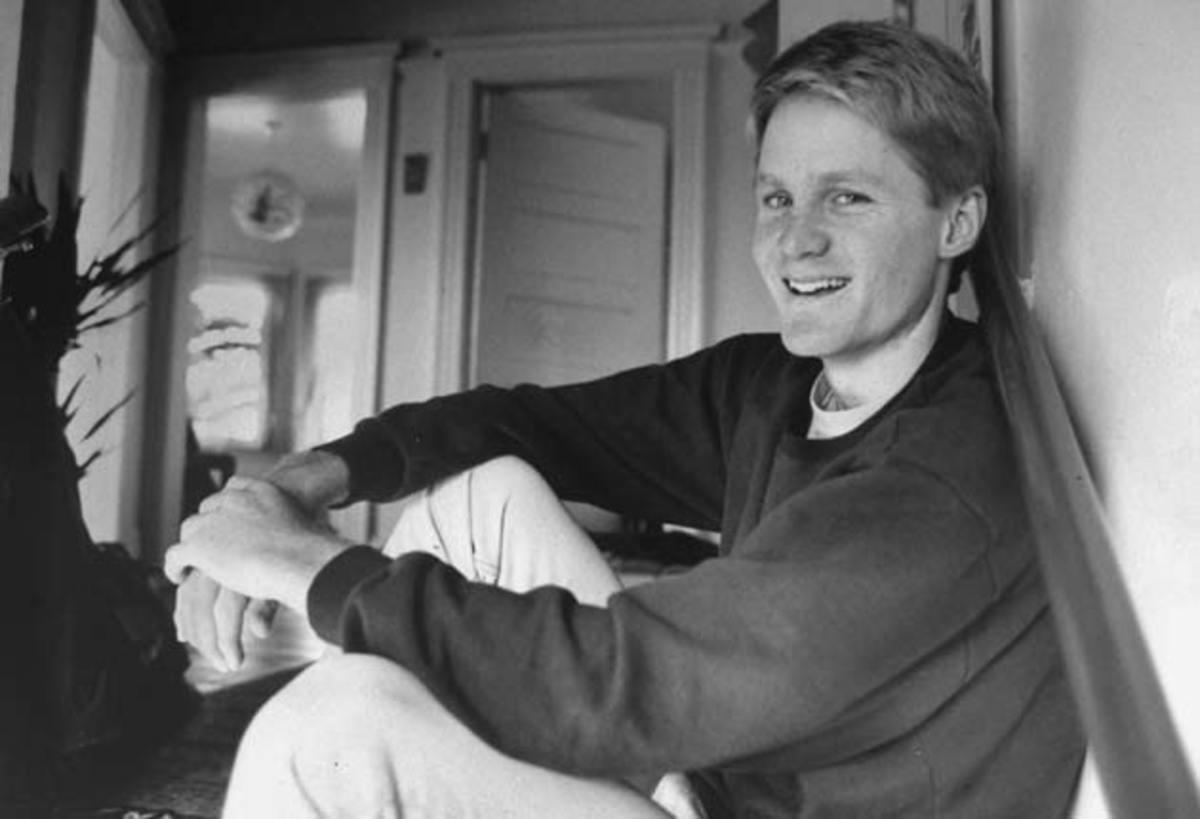
But Kerr saved his most biting commentary for his own crew: “One team we neglected to mention is the boys’ basketball team. This was purposely done, as this bunch of free wheeling, fast dealing, transcript stealing characters, who walk around with their chins held to the heavens and their stomachs held in, are not worthy of any mention alongside the rest of Pali’s fine teams.” More than three decades have passed since those columns were published, and the newsprint has faded, but the authors’ point of view has not. “Taking the Riptide seriously may be hazardous to your health,” he and Silver cautioned. “C’mon Pali, we don’t want to hurt anyone’s feelings, but try to lighten up a little.”
Cavaliers stifle Warriors in Game 2 as LeBron James's brilliance continues
After graduation Kerr was headed to play basketball at Cal State–Fullerton, until Arizona coach Lute Olson stopped by the Pali gym in the summer of ’83. Olson was with his wife, Bobbi, and they watched a pickup game. At the end Olson asked her about the spindly guard with the sniper shot. “You’ve got to be kidding,” Bobbi replied. But Olson had just left Iowa, inheriting a Wildcats roster that went 4–24. He could not be picky.
In Tucson, Kerr saw how a coach built a culture, grouping players in dorms, inviting them over for dinners, creating family away from home. Five years later—Kerr redshirted one season with a knee injury—the Wildcats were in the Final Four, and the 6'3" marksman was college basketball’s darling. “He was the same then as he is today,” Margot says. “A complete wiseass.” He joked on a radio show that Olson needed to give up heroin. He told a reporter that he was going to throw up if anyone else compared him with Huck Finn. He guest-authored a column in The Daily Californian, where Silver was an editor, responding to his many hecklers: “To the earthy-looking, Birkenstock-wearing girl who, during one game two years ago, repeatedly yelled, ‘Kerr, what kind of hair spray do you use?’ I say... Before you and all the rest of Berkeley ask for advice on hair spray, try thinking about the simple basics of personal hygiene—like showering.”
Kerr hashed out a sensible postcollege plan. “He was going to play in Europe,” Margot says. “Then he’d come back and probably be a grad assistant.” But the Suns drafted him 50th in 1988, and as Kerr languished on the bench, he envied friends who were already on the coaching track. He was wasting time, first in Phoenix, then Cleveland and finally Orlando, which let him loose in ’93. That summer he called the Bulls, and so began the hot streak that won’t run out: five seasons in Chicago with Phil Jackson, and three championships; then four seasons in San Antonio with Gregg Popovich, and two championships. When Kerr retired in 2003, TNT immediately offered him a lead-analyst gig, even though he had no experience. A year later a banker named Robert Sarver contacted him about buying a team, and three months after that they owned the Suns. (Kerr was told by the league to divest his small stake in the franchise when he was hired by Golden State.) In ’07, Sarver made him GM, though he again had no experience and Kerr figured he could do the job mainly from his home in San Diego’s North County.
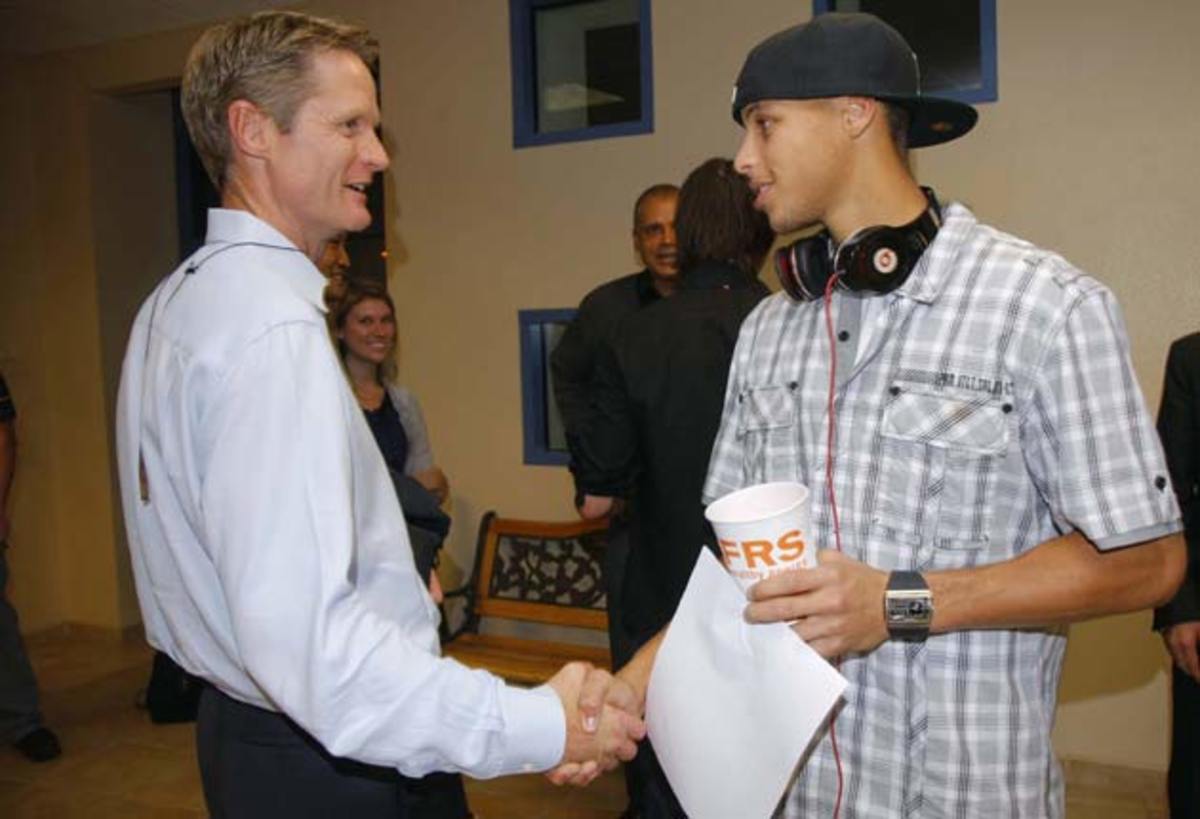
The story of Malcolm Kerr’s death has been well‑chronicled—Islamic terrorists assassinated him in 1984 at the American University of Beirut, where he was president—but the effect on his son has not. Kerr stayed in San Diego for 11 years, instead of embarking on an itinerant coaching career, partly because he had lost time with his father and could not bear to lose any with his three children. He was a fixture at Torrey Pines High for Maddy’s volleyball games and Nick’s basketball games. He cracked up over comedy skits that his youngest, Matthew, performed at The Bishop’s School. The family played epic baseball games in their backyard—which they call Spritzer Park, after a curious brand of aromatherapy spray Margot once bought—and eventually the kids grew big enough to hit home runs over the guesthouse, a converted barn.
Maybe that’s how he knew it was time. When Kerr finally hit the market last spring, the Knicks happened to need a coach, and soon enough so did the Warriors. At the NBA Board of Governors meetings in April, Sarver approached Warriors owner Joe Lacob and encouraged him to consider Kerr. The hot streak continued. New York has had Jackson, the team president, but Golden State had Steph Curry, Klay Thompson, Maddy at Berkeley and Nick coming in the fall for his master’s in public health. “The main thing in all this,” Kerr says, “is I’ve been extremely lucky.”
The unlikeliest postseason storyline? Dellavedova's Finals-saving showing
That’s his standard line, except it doesn’t hold up anymore, not after 20-plus years of incredible bounces. “I only have one explanation,” says Nick U’Ren, Kerr’s special assistant. “I think the universe takes care of people like this. If you are good to others, it comes back around.” In Phoenix, Kerr worked with David Griffin, now the Cavaliers’ GM. “Basketball was the sum total of my life,” Griffin says. “I threw myself into the job to such a degree that I had absolutely no balance whatsoever. Steve made me understand, ‘You don’t have anything to prove.’ He made me comfortable living in a way that was meaningful to me. He made me a radically better human being.” One night, when the Suns were on the road, Kerr discovered that Griffin was watching from home instead of the office. “I’m so proud of you,” he told him.
Kerr’s last game as Phoenix GM was in the 2010 Western Conference finals against the Lakers. Midway through the fourth quarter of Game 6, Suns wing Jared Dudley tried to save a loose ball on the baseline and fell over a photographer. Kerr bolted from his seat and walked with the photographer as he was taken to the back of the arena, strapped onto a gurney and put into an ambulance. “Who can I call?” Kerr asked. The photographer, John McDonough, sustained torn ligaments in his neck. Kerr quickly dialed McDonough’s wife, Mitzki Belknap. This was all happening while the Lakers were taking control of the game and ending the Suns’ season.
• MORE NBA: More fun to watch in person: LeBron James or Stephen Curry?
Kerr kept a journal during his playing career, and last month Margot and Nick unearthed it in his dusty home office while completing a kitchen renovation. In many entries, he writes about his kids. In some, he vents about his minutes. But in a few, he looks ahead to a future in coaching. “I think that was the dream job,” Silver says, “before the fantasy got in the way.” When Kerr partnered with Marv Albert at TNT, they interviewed coaches before games, and he took notes on the pieces of cardboard that came in his dress shirts from the dry cleaners. “He asked some questions that might not fit on a telecast,” Albert recalls, “but that he could use down the line.” He was gathering intelligence, dropping in on Spurs coaching meetings, like the one in the summer of ’10 at The Peninsula hotel in Chicago. San Antonio was overhauling its offense after being swept by the Suns. Only Kerr could pull that off, beating a team and then scoring an invite to its retreat.
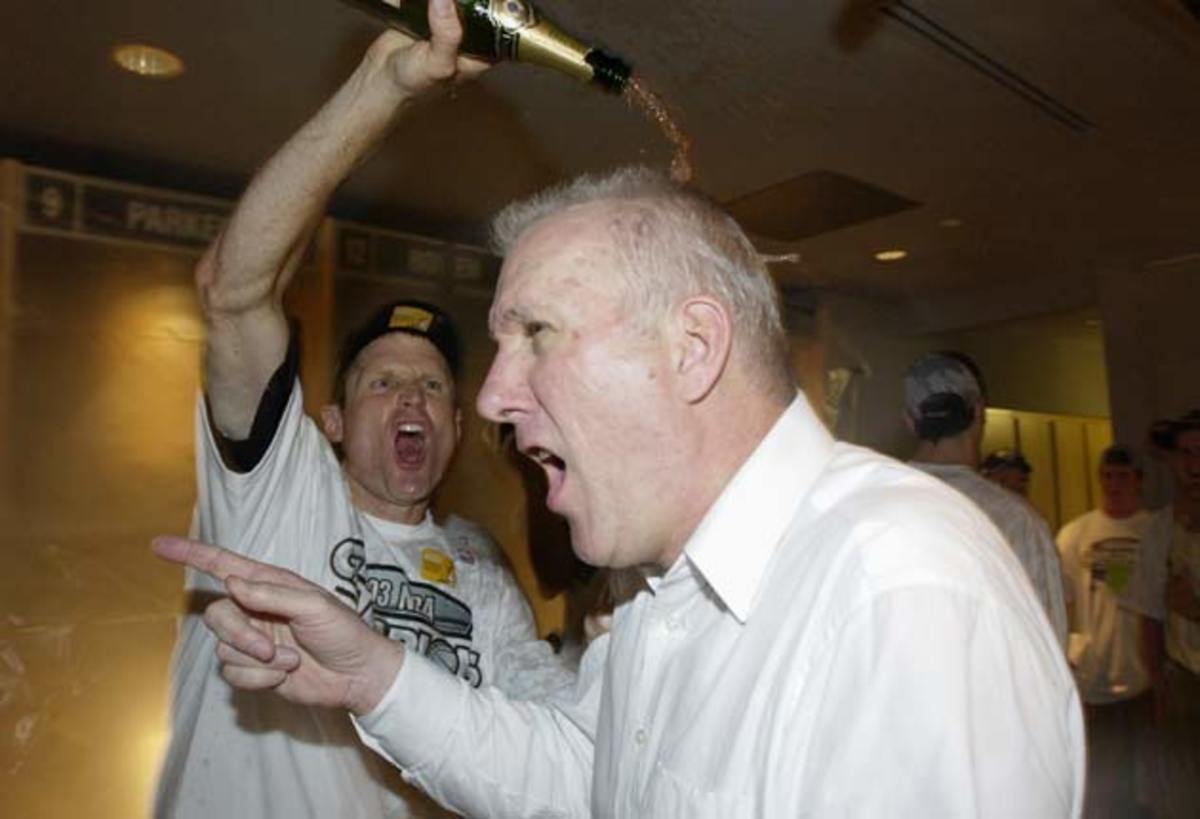
“People gravitate to him,” Popovich says. “In our program, we try to be straightforward—no Knute Rockne speeches, no blown smoke, no manipulations. ‘This is what you do well, this is what you do poorly, here’s your role.’ And add humor. Always add humor. Steve has a great sense of humor—refined, honest and self-deprecating when it needs to be.” This season has confirmed what Kerr learned from Popovich and Jackson, that 90% of coaching is creating an environment, through force of personality. The other 10% involves strategy. “The easy part,” Kerr calls it.
Living around the globe taught him to blend with people from different backgrounds, one more gift his father is still giving. In the fall he moved two longtime starters to the bench, and both could have grown surly. “Friends tell me all the time, ‘I’m sure you can’t stand Steve,’” says Golden State forward David Lee. “Of course, I’d love to play more, but I respect the way he’s handled it. He’s been up front and honest, and that’s all you can ask.” Swingman Andre Iguodala, the other demoted veteran, coasted at times during camp. Kerr made him a captain, put him in charge of the second unit and underlined his importance through the media. In the first two games of the Finals, Iguodala was a mainstay in the fourth quarter and overtime, the lone Warrior capable of slowing LeBron James. Kerr could have been in New York right now, planning for the lottery, or even in Cleveland. Griffin says he called Kerr about the Cavs’ job last May, but that was before they signed James, and he demurred. He wound up in the Bay Area, with a good team he has turned into a historic one, and Birkenstocks he breaks out when he strays from Vans. “Such a hypocrite,” Maddy laughs. Kerr’s life, like everybody’s, is filled with sliding doors. But behind all of his are gold trophies and Purple Cups.
